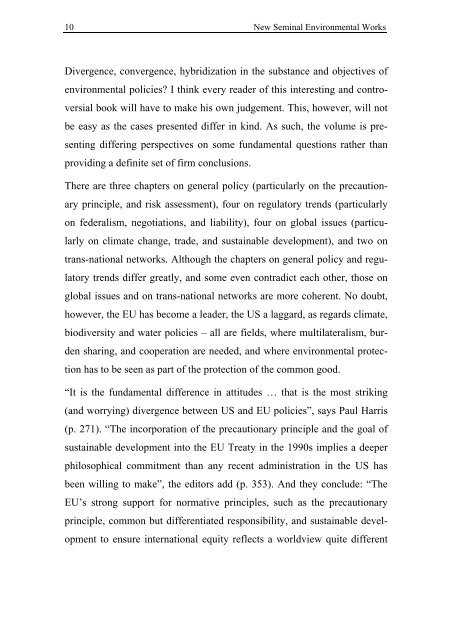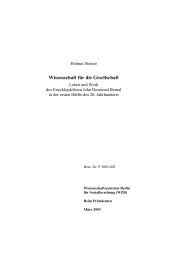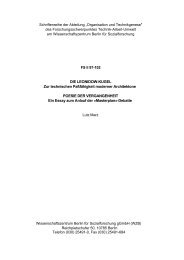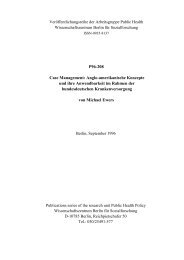New seminal environmental works. Nine review articles. - WZB
New seminal environmental works. Nine review articles. - WZB
New seminal environmental works. Nine review articles. - WZB
You also want an ePaper? Increase the reach of your titles
YUMPU automatically turns print PDFs into web optimized ePapers that Google loves.
10 <strong>New</strong> Seminal Environmental Works<br />
Divergence, convergence, hybridization in the substance and objectives of<br />
<strong>environmental</strong> policies? I think every reader of this interesting and contro-<br />
versial book will have to make his own judgement. This, however, will not<br />
be easy as the cases presented differ in kind. As such, the volume is pre-<br />
senting differing perspectives on some fundamental questions rather than<br />
providing a definite set of firm conclusions.<br />
There are three chapters on general policy (particularly on the precaution-<br />
ary principle, and risk assessment), four on regulatory trends (particularly<br />
on federalism, negotiations, and liability), four on global issues (particu-<br />
larly on climate change, trade, and sustainable development), and two on<br />
trans-national net<strong>works</strong>. Although the chapters on general policy and regu-<br />
latory trends differ greatly, and some even contradict each other, those on<br />
global issues and on trans-national net<strong>works</strong> are more coherent. No doubt,<br />
however, the EU has become a leader, the US a laggard, as regards climate,<br />
biodiversity and water policies – all are fields, where multilateralism, bur-<br />
den sharing, and cooperation are needed, and where <strong>environmental</strong> protec-<br />
tion has to be seen as part of the protection of the common good.<br />
“It is the fundamental difference in attitudes … that is the most striking<br />
(and worrying) divergence between US and EU policies”, says Paul Harris<br />
(p. 271). “The incorporation of the precautionary principle and the goal of<br />
sustainable development into the EU Treaty in the 1990s implies a deeper<br />
philosophical commitment than any recent administration in the US has<br />
been willing to make”, the editors add (p. 353). And they conclude: “The<br />
EU’s strong support for normative principles, such as the precautionary<br />
principle, common but differentiated responsibility, and sustainable devel-<br />
opment to ensure international equity reflects a worldview quite different
















